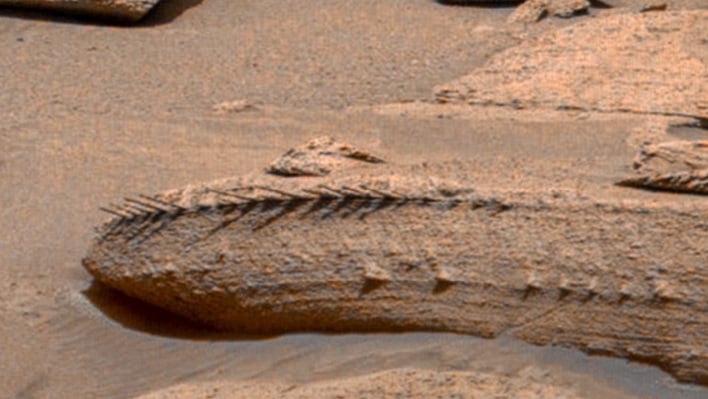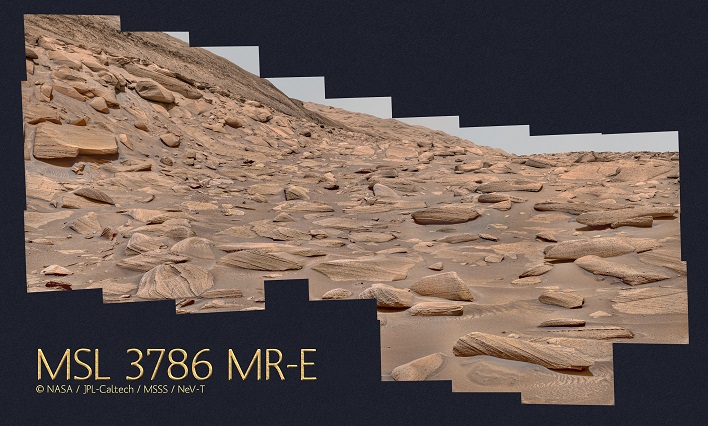NASA Solves The Mystery Of A Strange Dragon-Like Skeleton Spotted On Mars

This is not the first time a NASA spacecraft has captured an image that has left those on Earth searching for explanations as to what it is. Curiosity captured an eerie tomb-like doorway on the Red Planet last year that had some imagining a secret Martian base hidden beneath the surface of Mars. The explanation was that it was simply the space between two fractures in a rock. The image being pondered this time around has a similar humdrum explanation.
In an interview with Fox News, Andrew Good with NASA's Jet Propulsion Laboratory in California explained, "Often, the odd-shaped rocks have their origin in the ancient past, when liquid water seeped through the cracks in the rock, bringing minerals along with them." He added, "These minerals were harder than the rock around them, so the wind eroded everything away except the minerals."
Astrobiologist Nathalie A. Cabrol (@shasta721) shared the image on Twitter and remarked that the image was the "most bizarre rock" she had seen in the 20 years she had been studying Mars.
The image was captured utilizing the rover's Chemistry and Camera (ChemCam) instrument. The instrument is comprised of a laser, camera, and spectrograph that work together to identify the chemical and mineral compositions of rocks and soils. ChemCam can also be used to clear away dust from Martian rocks with its laser, allowing for a remote camera to take highly-detailed images.
Curiosity has taken over one million images since landing on the Red Planet in August of 2012. Its primary mission was to discover whether the planet had the ingredients for microscopic life at some point in its past. While the rover has since proven the presence of both water and the building blocks needed for life, Good points out that while the latest image is unique, "it's also definitely a rock."


